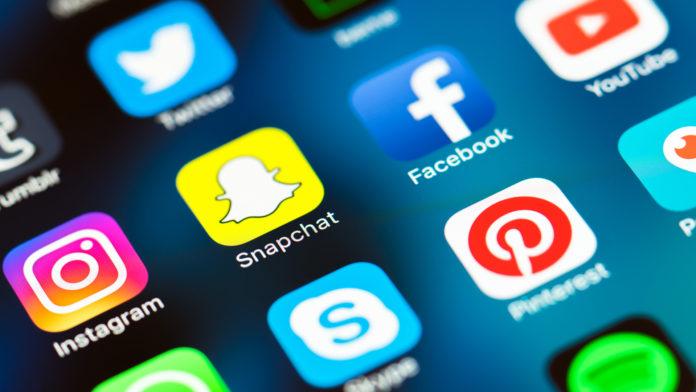Do you have an Instagram account or know somebody who does? Maybe you have Facebook, Twitter, or Snapchat? You may hear kids or teens say, “Do it for the gram!”, “How many likes did you get on that photo?”, “Did you see that tweet?”, or “Is this Insta-worthy?”
![]() Instagram
Instagram
Upload photos and videos to a newsfeed, you can post videos or photos on your story for 24 hours, followers can “love” your posts, followers can also comment on them, you can go “live” on your profile where everyone can see it in real time.![]() SnapChat
SnapChat
Capture photos and send them directly to someone and it disappears after 1-10 seconds, upload photos to your “story” which people can see for 24 hours.![]() Twitter
Twitter
Upload photos and videos to a newsfeed, post status updates and thoughts to a newsfeed, followers can “retweet” your posts so that it shows on their profile, followers can also like and respond to your posts.![]() Facebook
Facebook
Upload photos and videos to a newsfeed, you can post videos or photos on your story for 24 hours, followers can like, comment on, and share your posts, you can go “live” on your profile where everyone can see it in real time.According to the U.S Department of Health and Human Services, Office of Adolescent Health (2016), “Facebook, Instagram, and Snapchat are the most popular, and 71 percent of teens say they use more than one social media site”. The Office of Adolescent Health (2016) also reports that, “A survey of over 600 teens from 2012 found that nearly all shared their real name and photos of themselves, and most shared their school name, birthdate, and the city or town where they lived”. Children and teens are constantly on social media and it is up to adults to ensure that they are using social media safely and appropriately.
It is important to remember that social media can be used in very positive ways. The Office of Adolescent Health (2016) reports that, “As with most technology, there are potential benefits and risks to teens’ social media use. These platforms can help teens socialize and communicate with peers; find learning opportunities; and become engaged in causes important to them. Social media also provides a wealth of information and resources that teens can use to maintain their own health and relationships”.
On the other hand, The Office of Adolescent Health reports that, “teens on social media are at risk of cyberbullying and other aggression online; inappropriate content or exposure to predators; and having their private information available publicly. There is also some evidence that frequent social media use may be linked to depression and other mental health problems”. According to The European Scientific Journal, “Increase in social media usage causes the self-esteem of individuals to decrease. One hour spent on Facebook daily results in a 5.574 decrease in the self-esteem score of an individual” (Jan,Muqaddas, et al, 2017).
Here are some helpful tips on how to keep kids safe on social media (Singh, 2014):
- Understand what social media they are using or want to use
- Download the social media apps to your phone and browse through the apps so you are familiar with them. You might want to consider making an account as well.
- Establish an age restriction
- It is helpful to set an age limit on when your child should be allowed to start using social media. Instead of banning it, an age limit may help avoid the chances of a secretive account being created.
- Ensure that all of their profiles are set to private
- When the accounts are private, you have the opportunity to approve or accept who can look at your account.
- Be open about the dangers and consequences of social media
- Make sure that they know what is posted online, will be online forever, and to be careful. Teach them to be kind on social media and make sure they know what is appropriate to post or share with their followers.
- Set guidelines or rules about social media
- You can try setting a limit on screen time, the amount of accounts they have, and setting boundaries such as no phones during dinner, family time, or bed time.
 Works Cited:
Works Cited:
Jan,Muqaddas, et al. “Impact of Social Media on Self Esteem.” European Scientific Journal,vol.13, no.23, ser. 1857-7881, Aug. 2017, pp. 329-341. 1857-7881, Eujournal.org/index.php/esj/article/viewFile/9815/9318
Office of Adolescent Health (Ed.).(2016, May13). February 2016: Teens’ Social Media Use. Retrieved January 31, 2019, from http://www.hhs.gov/ash/oah/news/e-updates/february-2016-teens-social-media-use/index.html
[Photograph of a phone screen](2017) Retrieved from https://defendernetwork.com/news/national/employers-relying-social-media/
[Photograph of teens on their phones](2019) Retrieved from https://www.jedfoundation.org/who-we-are/our-partners/teens-group-smiling-cell-phones-sweatshirts-2/
Singh, Kyli. “6 Expert Tips for Keeping Your Kids Safe on Social Media. “Mashable, Mashable, 21 Sept. 2014, https://mashable.com/2014/09/21/social-media-safety-kids/.
Katie Hoben is a Health and Wellness Program Associate with EmPoWER Somerset and can be reached at katie@empowersomerset.com or in the Office: (908)722-4900 x104




